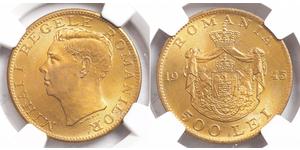Antoninianus
The antoninianus was a coin used during the Roman Empire thought to have been valued at 2 denarii. It was initially silver, but was slowly debased to bronze. The coin was introduced by Caracalla in early 215 and was a silver coin similar to the denarius except that it was slightly larger and featured the emperor wearing a radiate crown, indicating that it was valued at twice as much. Antoniniani depicting females (usually the emperor’s wife), featured the bust resting upon a crescent moon.
But even at its introduction its silver content was only equal to 1.5 denarii. This helped create inflation – people rapidly hoarded the denarii, while both buyers and sellers recognised the new coin had a lower intrinsic value and elevated their prices to compensate. Silver bullion supplies were running short since the Roman Empire was no longer conquering new territory, and because a series of soldier emperors and rebels needed coin to pay their troops to buy loyalty. So each new issue of the antoninianus had less silver in it than the last, and each contributed to inflation. By the late third century the coins were almost entirely made of bronze from melted down old coins like the sestertius. Vast quantities were being produced, with a large proportion of the stocks being contemporary forgeries, often with blundered legends and designs. Individual coins were by then practically worthless and were lost or discarded by the millions. Today the coins are extremely common finds. The situation was not unlike the hyperinflation of the Weimar Republic in 1920s Germany when paper money was printed in reckless abundance. The coin ceased to be used by the end of the third century when a series of coinage reforms attempted to arrest the decline by issuing new types.
Modern numismatists use this name for the coin because it is not known what it was called in antiquity. The name was given to it because an ancient Roman document called the Historia Augusta (of generally low reliability) refers to silver coins named after an Antoninus on several occasions (several Roman emperors in the late second and early third centuries bore this name among others). Because Caracalla’s silver coin was a new issue, an association was made with it, and although the association is certainly false, the name has stuck.
500 Leu Romania Brass
group has 2 coins / 1 prices
⇑
1/4 Escalin Guadeloupe Gold
group has 3 coins
⇑









